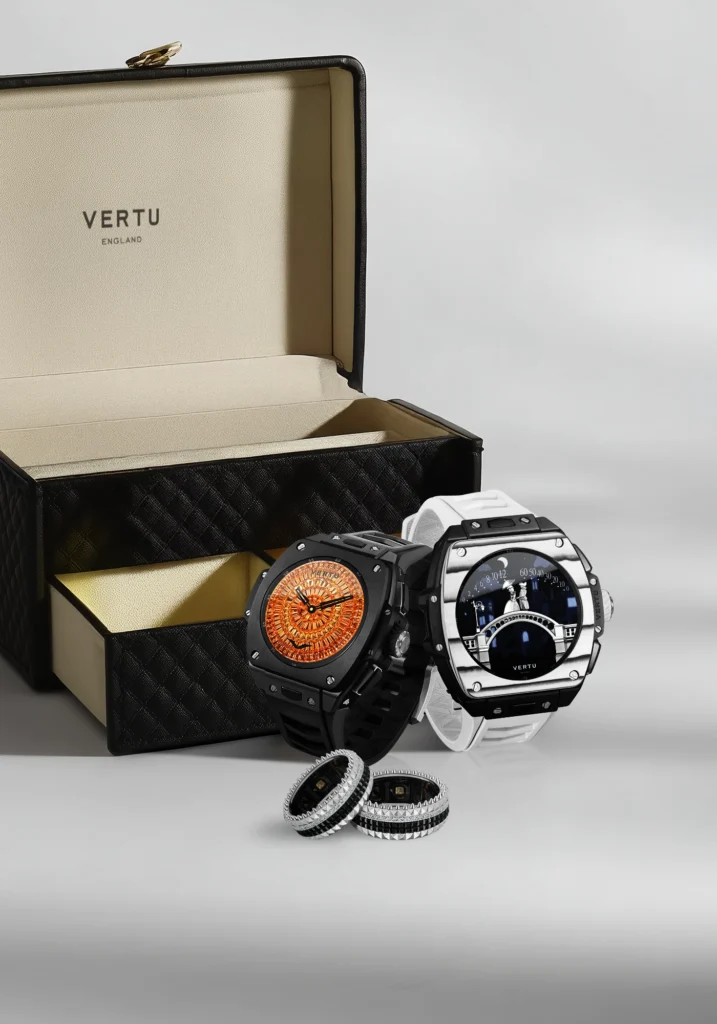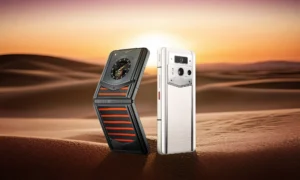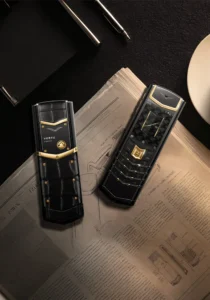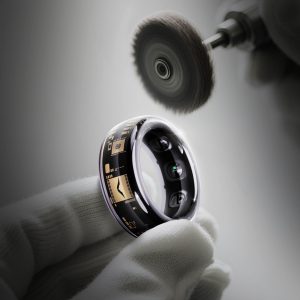
Tired of the same old gadgets? Ready to explore the pinnacle of technological extravagance?
What You'll Learn:
- Factors defining the ultimate price tag of luxury tech in 2025.
- Key US market trends shaping the demand for high-cost gadgets.
- What truly makes cutting-edge technology worth a fortune.
- Strategies for maximizing the value of your premium tech investments.
Defining ‘Most Expensive Tech': What Drives the Ultimate Price Tag in 2025
In 2025, the definition of “most expensive tech” extends far beyond mere specifications. The exorbitant price tags attached to these elite devices are a complex interplay of innovation, craftsmanship, and an aspirational lifestyle. It's not just about having the latest processor; it's about owning a piece of the future, meticulously crafted and imbued with exclusivity.
Beyond Specs: R&D, Materials, and Exclusivity
The true cost of ultra-luxury tech often lies hidden beneath the surface.
- Research & Development (R&D): Pioneering new technologies, miniaturization, and revolutionary user interfaces require immense investment. Brands pushing boundaries in AI integration, quantum computing interfaces, or advanced biometric security pour millions into R&D.
- Premium Materials: Forget plastic. Think aerospace-grade titanium, ethically sourced rare earth elements, hand-polished ceramic, sapphire crystal displays, and even precious metals like gold and platinum. The tactile feel and aesthetic appeal of these materials are paramount.
- Exclusivity and Limited Production: True luxury is often scarce. Limited production runs, bespoke manufacturing processes, and the involvement of master artisans all contribute to a device's rarity and, consequently, its price. This creates an aura of prestige that mass-produced items simply cannot replicate.
The Psychology of Luxury Tech: Why US Consumers Splurge
The United States has a significant appetite for luxury goods, and technology is no exception. This splurge is driven by several psychological factors:
“Luxury tech isn't just about functionality; it's about signaling status, achievement, and a discerning taste for the finest.”
- Status Symbolism: Owning the most expensive tech is a clear indicator of success and affluence. It's a way to stand out and be recognized.
- Desire for Uniqueness: In a world saturated with identical devices, luxury tech offers a chance to own something truly distinct and personalized.
- Perceived Superiority: Consumers often associate higher prices with higher quality, better performance, and a more refined user experience, even if the objective differences are marginal.
- Investment in Craftsmanship: Many buyers appreciate the artistry and meticulous attention to detail that goes into creating these devices, viewing them as functional works of art.
Understanding Key Terminology: From Bespoke to Artisanal Electronics
Navigating the world of high-end tech requires understanding its unique lexicon:
- Bespoke: Tailor-made to individual specifications. A bespoke device is designed and built from the ground up for a single client.
- Artisanal: Crafted by skilled artisans, often with a focus on traditional techniques and high-quality, non-mass-produced components.
- Limited Edition: Produced in a strictly limited quantity, often with unique design elements or materials.
- Hand-Finished: Components or the entire device undergo manual finishing processes by skilled craftspeople, adding a personal touch and enhancing aesthetics.
2025 US Market Trends: The Landscape of High-Cost Gadgets
The United States continues to be a fertile ground for the most expensive technology, with evolving trends shaping what consumers are willing to pay for.
Consumer Demand for Ultra-Premium Devices in the US
Demand for ultra-premium devices is not just sustained; it's growing. This is fueled by increasing disposable incomes among certain demographics and a desire to own the absolute best.
- Tech-Savvy Affluent: A segment of the population actively seeks out the latest technological advancements, regardless of cost, to experience them first.
- Early Adopters with Deep Pockets: These consumers are willing to pay a premium to be the first to own and showcase groundbreaking technology.
- Appreciation for Durability and Longevity: While not always the primary driver, the expectation of superior build quality and longevity is a key factor for many luxury tech buyers.
The Tech Sector's Share in the Luxury Goods Market
Technology is increasingly becoming a cornerstone of the broader luxury goods market.
“The lines between traditional luxury items like watches and jewelry and high-end technology are blurring. Consumers now expect their tech to be as aesthetically pleasing and exclusive as their designer accessories.”
The tech sector's contribution to the luxury market is multifaceted, encompassing:
- High-End Smartphones and Wearables: Devices with premium materials and exclusive features.
- Audiophile Equipment: Ultra-high-fidelity audio systems and headphones.
- Luxury Computing: Custom-built PCs and high-performance laptops with unique designs.
- Smart Home Devices: Integrated luxury systems offering unparalleled convenience and aesthetics.
Emerging Categories for High-Value Tech
Beyond established categories, new frontiers are emerging for expensive tech:
- Personalized AI Companions: Advanced AI systems designed for individual needs, offering sophisticated interaction and learning capabilities.
- Augmented Reality (AR) and Virtual Reality (VR) Hardware: Immersive experiences demanding cutting-edge, high-resolution displays and advanced haptics.
- Biometric Security Devices: Highly advanced personal security systems that go beyond standard fingerprint or facial recognition.
- Sustainable Luxury Tech: Devices crafted from eco-friendly, high-end materials with a focus on ethical production and longevity.
Innovation and Exclusivity: What Makes Tech Worth the Fortune?
The premium price tag on cutting-edge gadgets is justified by a confluence of groundbreaking innovation, unparalleled exclusivity, and meticulous craftsmanship.
The Role of Ultra-Exclusive Components and Bespoke Services
The very essence of what makes a device expensive often lies in its unique components and the services surrounding it.
- Proprietary Chipsets: Custom-designed processors offering performance levels unattainable by standard silicon.
- Advanced Display Technologies: Beyond OLED, think micro-LED with exceptional brightness, color accuracy, and refresh rates, often integrated with unique form factors.
- Hand-Assembled Modules: Key components meticulously assembled by hand by master technicians, ensuring perfect calibration and performance.
- Dedicated Concierge Services: For the highest tier of luxury tech, buyers often receive personalized support, setup, and maintenance from dedicated experts.
Case Study: Vertu Phones – A Legacy of Luxury Mobility
Vertu, though no longer a dominant force, serves as a classic example of ultra-expensive tech. These phones epitomized luxury through:
- Premium Materials: Crafted from materials like titanium, sapphire crystal, and fine leather.
- Hand-Assembly: Each Vertu phone was assembled by a single craftsman.
- Exclusive Services: Dedicated concierge services accessible via a physical button, offering assistance with everything from restaurant reservations to travel arrangements.
- Limited Production: Ensuring exclusivity and a high resale value.
While the smartphone market has evolved, the principles Vertu championed continue to influence today's luxury tech brands.
Customization as a Value Driver in High-End Tech
The ability to personalize a device elevates it from a mere gadget to a personal statement.
- Material Choices: Offering a range of exotic woods, leathers, metals, and finishes for the device casing.
- Engraving and Personalization: Options for custom engraving of initials, logos, or meaningful phrases.
- Software Customization: Tailored user interfaces, exclusive app bundles, or personalized AI functionalities.
Here's a look at how customization can differentiate high-end tech:
| Feature | Standard Tech Example | Luxury Tech Example (Bespoke) | Value Proposition |
| Casing Material | Aluminum Alloy | Titanium, Ceramic, Gold | Enhanced durability, premium feel, aesthetic appeal |
| Color Options | Limited Palette | Extensive, Custom Mixed | Unique visual identity, personal expression |
| Engraving | None | Laser Etched Initials/Logo | Personalization, exclusivity, sentimental value |
| User Interface | Standard OS | Custom Themed UI, Exclusive Apps | Streamlined experience, enhanced privacy/security |
Maximizing Value: Tips for Owning the Most Expensive Tech in 2025
Purchasing the most expensive tech is a significant investment. Smart ownership strategies can ensure you derive the maximum value and satisfaction.
Evaluating ROI Beyond Price: Durability and Resale Value
While the initial cost is high, consider the long-term return on investment.
- Durability: Premium materials and superior build quality often translate to a longer lifespan and resistance to wear and tear. This means fewer replacements over time.
- Resale Value: Certain luxury tech items, especially those with limited production runs or iconic designs, can hold their value remarkably well, sometimes even appreciating over time. Research brands and models known for strong resale performance.
- Performance Longevity: Devices built with top-tier components are less likely to become obsolete quickly due to performance limitations.
Common Pitfalls for US Buyers of Luxury Tech
Be aware of potential traps when venturing into the high-end tech market.
- Overpaying for Brand Name Alone: Ensure the premium price is justified by tangible innovation, materials, or exclusive services, not just a logo.
- Ignoring Software Support: Expensive hardware is only as good as its software. Check the brand's commitment to updates and long-term support.
- Lack of Practicality: Sometimes, the pursuit of extreme luxury can compromise usability. Ensure the device still meets your actual needs.
- Underestimating Maintenance Costs: Some exotic materials or intricate designs might require specialized cleaning or maintenance.
Getting the Most from Your Premium Gadgets
To truly leverage your investment:
- Understand Every Feature: Take the time to thoroughly explore all functionalities. Many premium devices offer advanced capabilities that are often overlooked.
- Utilize Exclusive Services: If your tech comes with concierge services, premium support, or exclusive content, make full use of them.
- Protect Your Investment: Invest in high-quality cases, screen protectors, and insurance to maintain the pristine condition of your device.
- Join the Community: Engage with online forums or brand communities for luxury tech owners. You can learn tips, share experiences, and stay updated.
- Consider the Ecosystem: If you own multiple devices from the same luxury brand, explore how they integrate to enhance your overall experience.
FAQ (Frequently Asked Questions)
Q: Are the most expensive tech gadgets really worth the price in 2025?
A: The value is subjective and depends on individual priorities. If you highly value cutting-edge innovation, superior craftsmanship, exclusive materials, and the prestige associated with owning the best, then yes, they can be worth it. However, for basic functionality, standard consumer electronics will suffice at a fraction of the cost.
Q: What are the main materials used in the most expensive tech devices?
A: Common materials include aerospace-grade titanium, stainless steel, ceramic, sapphire crystal for displays, and sometimes precious metals like gold and platinum. Exotic woods and high-quality, ethically sourced leathers are also frequently used for aesthetic appeal and tactile experience.
Q: How can I ensure the resale value of my luxury tech?
A: To maximize resale value, keep the device in excellent condition, retain all original packaging and accessories, keep purchase receipts, and avoid customizations that might limit appeal to a broader market. For limited edition items, maintaining their rarity is key.
Q: What is the difference between “bespoke” and “limited edition” tech?
A: Bespoke tech is custom-made to an individual's specific requirements, often designed and built from scratch for one client. Limited edition tech is produced in a predetermined, finite quantity, making it rare but generally not unique to a single buyer.







